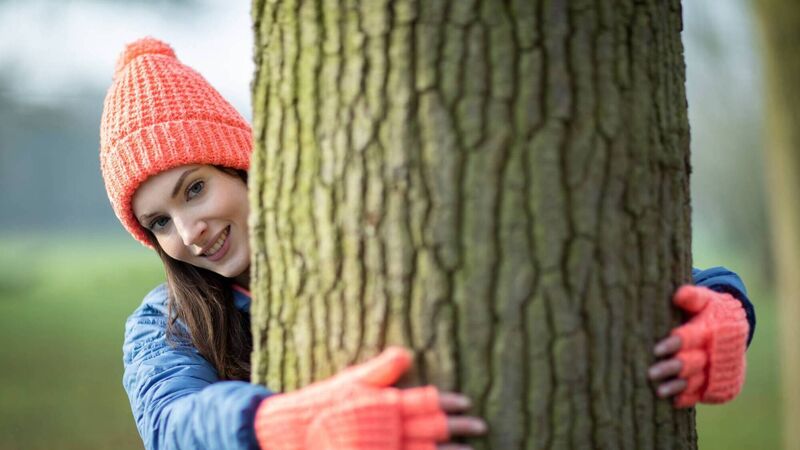Why a winter walk is the best way to boost your mood and energy

CLOSE TO NATURE: A stroll on even a bitingly cold day can bring significant emotional and physical benefits. Picture: iStock
It’s cold outside and the short, dark days are probably sapping your energy and enthusiasm. Added to that, the stress of the festive season might mean you are frazzled and short of time, but that doesn’t mean you should cocoon yourself indoors until January 2. The worst thing you can do is to curtail your outdoor exercise plans at this time of year.
In many ways, winter is the best time to schedule a walk outdoors with scientists showing that a stroll on even a bitingly cold day can bring significant emotional and physical benefits. Here’s how to make the best of the weather and to coax yourself outdoors for a walk in winter wonderland:
Take to the trails
Hitting woodland trails or country paths is among the best ways to revive body and mind. Trails require navigation through slippery mud, dodging overhanging branches and tackling obstacles such as stiles and gates as well as birds and animals. Psychologists say that encountering all of these mini-events require micro-and macro-adjustments to your route, which are good for the brain as well as the heart and lungs.
And Ireland has more than its share of trails to tackle with Sport Ireland Outdoors providing many in parks, forests, along river banks, on the coast, across bogs, on hills and on mountains. All are waymarked with directional arrows and signposts that vary in terms of grade (easy, moderate, strenuous and very difficult) and distance (short, day or multi-day) and mean you shouldn’t get lost. Visit irishtrails.ie for a comprehensive list of what’s available near you.
Boost your immune system
Research from Japan suggests that breathing in fresh air means we also breathe in phytoncides — airborne organic compounds with antibacterial properties that trees and plants release to protect themselves from insects. This could partly explain the health-boosting properties of nature walks.
In one study, researchers measured the effects of spending three days in a forest on the activity of a type of white blood cell called natural killer (NK) cells, which fight disease in the body. Results showed that NK cell activity was significantly higher after time spent in woodland and that the effects lasted for more than 30 days.
Remember, cold air can irritate the airways and the Asthma Association of Ireland (AAI) says we should all make sure our chest and throat are covered and wear a scarf, snood or face mask. “If you have asthma take two puffs of your inhaler before you go for walk when it is cold outside,” says Sarah O’Connor of the AAI.
It will ramp up your memory and give your brain a break
Relentlessly depressing news bulletins can mean your brain rarely gets a break in the run-up to Christmas. But by stepping outside, your mind automatically switches out of decision-making mode and away from stressing about work and life.
When University of Michigan psychologists explored the cognitive benefits of being exposed to nature, they found that walking outdoors in any season, no matter how cold or wet the weather, improved memory and attention.
Participants in the study were asked to follow either an urban route down busy streets or through botanical gardens and parks. The findings, published in the journal Psychological Science, showed the nature walks improved their short-term memory by 20%, but there were no improvements shown after walking down city streets.
There are other brain benefits. Dr Katie Cooper, a psychologist and the author of Plant Therapy, says that looking at plants and trees and their ‘fractal patterns’ — forms that repeat themselves in the patterns of branches — also has an immediate stress-busting effect.
“Research has shown that nature’s fractal patterns induce alpha brainwaves in us, evoking a relaxed, yet wakeful, state,” she says. “They are effortless to look at and yet interesting enough to draw our eye towards them, and the way we perceive fractal patterns puts us at ease.”
You’ll burn more fat
Exposure to cold temperatures is known to trigger the body’s stores of brown fat — a fat that burns rather than accumulates calories — into action. In one study, published in the American Journal of Human Biology, researchers found that participants used up to 34% more calories when hiking in cold weather than in warmer temperatures. On average, men burnt 4,787 calories a day (women 3,880) hiking in winter. Hiking the same distance in spring used 3,822 calories in men and 3,801 in women.
It’s easier to exercise in the cold
Once you’ve committed to getting outside, the chances are you will walk faster and further than you do in warmer months. Research professor John Brewer, a sports scientist at the University of Suffolk, showed that our bodies find it far easier to walk or jog in the biting cold than on hot summer days.
In tests conducted in heat-controlled laboratories, Brewer subjected participants to exercise in temperatures of 8°C and 24°C, the averages of an Irish winter and summer, and tracked differences in sweat loss, heart rate, blood lactate and their thermal sensation — or the level of comfort they felt. Results showed that in the cold conditions participants reported a 32% improvement in their level of comfort and also felt better able to sustain effort at that temperature than in a warmer environment.
“It can take some motivation to get outside when it is cold and grey outside,” says Brewer. “But there are many reasons why it is worthwhile.”
Find a walking buddy
If you struggle to get out alone, then a walking buddy could be what you need to stick to your activity plan through winter. Researchers from Anglia Ruskin University, reporting in the International Journal of Technology Assessment in Healthcare, found that walking with others not only means you are more likely to get outside in the first place, but it also might improve your quality of life in the longer term.
Walking with at least one other person “tended to increase life satisfaction and may also improve social connectedness”, says Catherine Meads, lead author of the review paper and a professor of health, social care and education.
Another study from the University of Illinois showed that mothers and daughters who spent 20 minutes walking together outdoors not only showed better attention during a cognitive task, but also had improved interactions with each other.
If you can’t persuade a relative or friend to join you, then look for a walking group near you. See Get Ireland Walking, www.getirelandwalking.ie/findgroup
CONNECT WITH US TODAY
Be the first to know the latest news and updates

Celebrating 25 years of health and wellbeing







